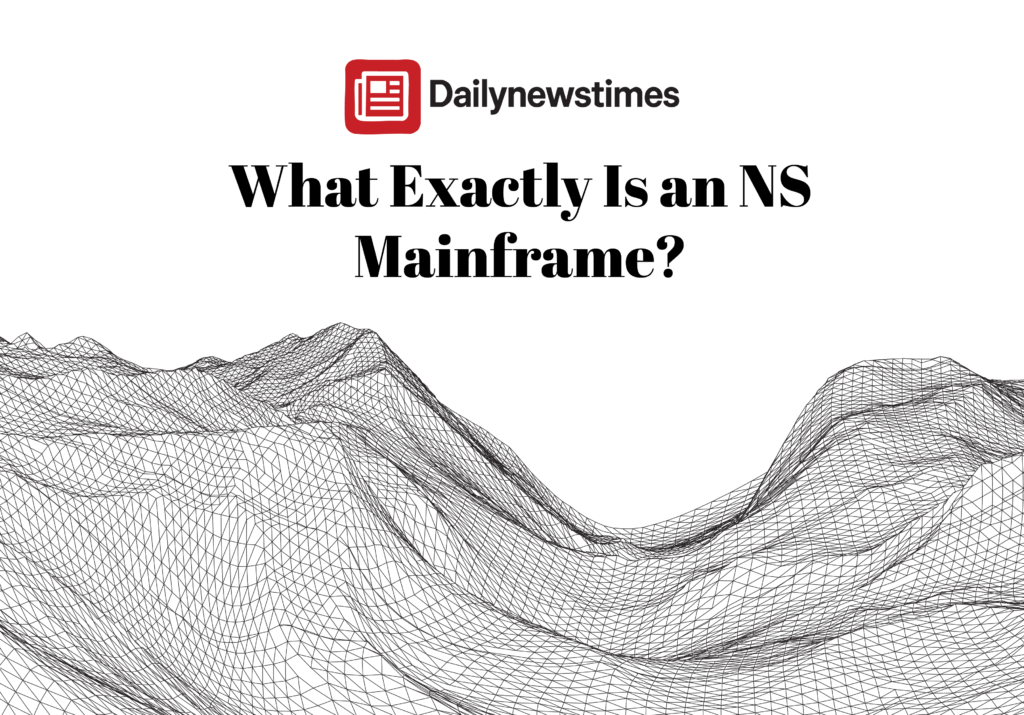Let’s be real—when someone hears “NS mainframe,” most folks think it’s some old-school, outdated tech. But guess what? These systems are still the engines running the modern world’s most critical operations. Whether it’s banking transactions, rail networks, or big data processing, NS mainframes are silently doin’ the heavy lifting in the background.
Even with all the cloud hype, edge computing, and AI buzz, mainframes haven’t just stuck around—they’ve evolved. In this article, we’ll dive into what NS mainframes actually are, how they work, and why companies still rely on ‘em today.
What Exactly Is an NS Mainframe?
The term NS mainframe often refers to robust enterprise-class computing systems—usually based on IBM Z architecture—used by large organizations like Norfolk Southern (NS), a major U.S. freight railroad. These mainframes are known for extreme reliability, bulletproof security, and handling huge workloads without breakin’ a sweat.
They support high-volume transaction processing, large-scale databases, and real-time applications, all at once.
Core Technologies Behind NS Mainframes
1. IBM Z Platform
Most NS mainframes are built on IBM Z systems, specifically designed for modern hybrid cloud environments. These machines run multiple operating systems like z/OS, Linux on Z, and z/VM.
The latest models, like the z16 and z17, come packed with Telum processors, which offer on-chip AI inference and quantum-safe encryption.
2. Virtualization & Partitioning
Thanks to LPARs (Logical Partitions), one mainframe can run dozens of environments simultaneously. This lets businesses consolidate workloads and scale efficiently.
3. API & Cloud Integration
Modern tools like IBM z/OS Connect expose mainframe functions via REST APIs, allowing seamless integration with cloud-native apps and services.
4. Workload Offloading
To speed things up, tools like Syncsort MFX offload processing to specialty engines (zIIPs). It boosts performance and cuts costs.
Why Businesses Still Rely on NS Mainframes
🔄 Reliability
Mainframes are famous for 99.999% uptime. That’s less than 5 minutes of downtime per year. In industries like banking or rail, downtime isn’t an option.
🔐 Security
These machines offer top-notch security with full data encryption, secure boot, multi-factor auth, and quantum-safe cryptography. Perfect for regulated industries like finance or healthcare.
🚀 Performance
NS mainframes can handle thousands of concurrent transactions per second without slowin’ down. They’re built for high throughput, even under stress.
📊 Scalability
They scale vertically—just add more memory or CPUs. No app changes needed. You don’t even gotta reboot the system.
Norfolk Southern: A Real-World NS Mainframe Case
One of the best-known use cases of an NS mainframe is—yup, you guessed it—Norfolk Southern.
Their mainframe runs:
- Real-time train tracking and crew scheduling
- Billing and invoicing for freight services
- Predictive maintenance based on sensor data
- Regulatory data reporting
It processes millions of records across 19,000+ miles of track every single day.
Mainframe vs Cloud Servers: Who Wins?
| Feature | NS Mainframe | Cloud Servers |
|---|---|---|
| Uptime | 99.999% | Typically 99.9% or lower |
| Speed | Handles mixed workloads instantly | Slower with high concurrency |
| Security | Hardware-locked, built-in crypto | Software-based, more prone to breaches |
| Integration | Via APIs (e.g. z/OS Connect) | Native to cloud ecosystem |
| Cost | High upfront, lower long-term TCO | Pay-as-you-go, but adds up quick |
Challenges with NS Mainframes
- Steep Learning Curve: Tech like JCL, SMP/E, and COBOL isn’t widely taught anymore.
- Talent Shortage: Mainframe experts are aging out. New devs aren’t trained in it.
- Integration Complexity: You need proper tooling (APIs, middleware) to connect mainframes with modern systems.
- Perceived Legacy: Despite bein’ modern, folks still think of them as outdated.
Tips for Managing Your NS Mainframe
- Train your team in z/OS, LPARs, and DevOps for mainframes
- Use tools like Syncsort MFX to offload batch jobs
- Automate updates with SMP/E
- Integrate smart using z/OS Connect
- Have a DR plan using redundancy setups
FAQs
Q: Is the NS mainframe the same as IBM Z?
Not exactly. NS refers more to usage (like Norfolk Southern), but IBM Z is usually the core platform.
Q: Are mainframes dying?
Not at all. They’re evolving. Many still run core infrastructure, even if you don’t see it.
Q: Can I connect a mainframe to the cloud?
Yes—with APIs and tools like z/OS Connect, hybrid environments are totally doable.
Conclusion
NS mainframes might seem like legacy tech, but they’re the opposite of outdated. They’re mission-critical, super secure, and built for scale. In a world obsessed with digital transformation, these systems offer something most tech doesn’t: stability and trust.
If your business depends on reliability and speed at scale—you don’t just want a mainframe. You probably need one.


